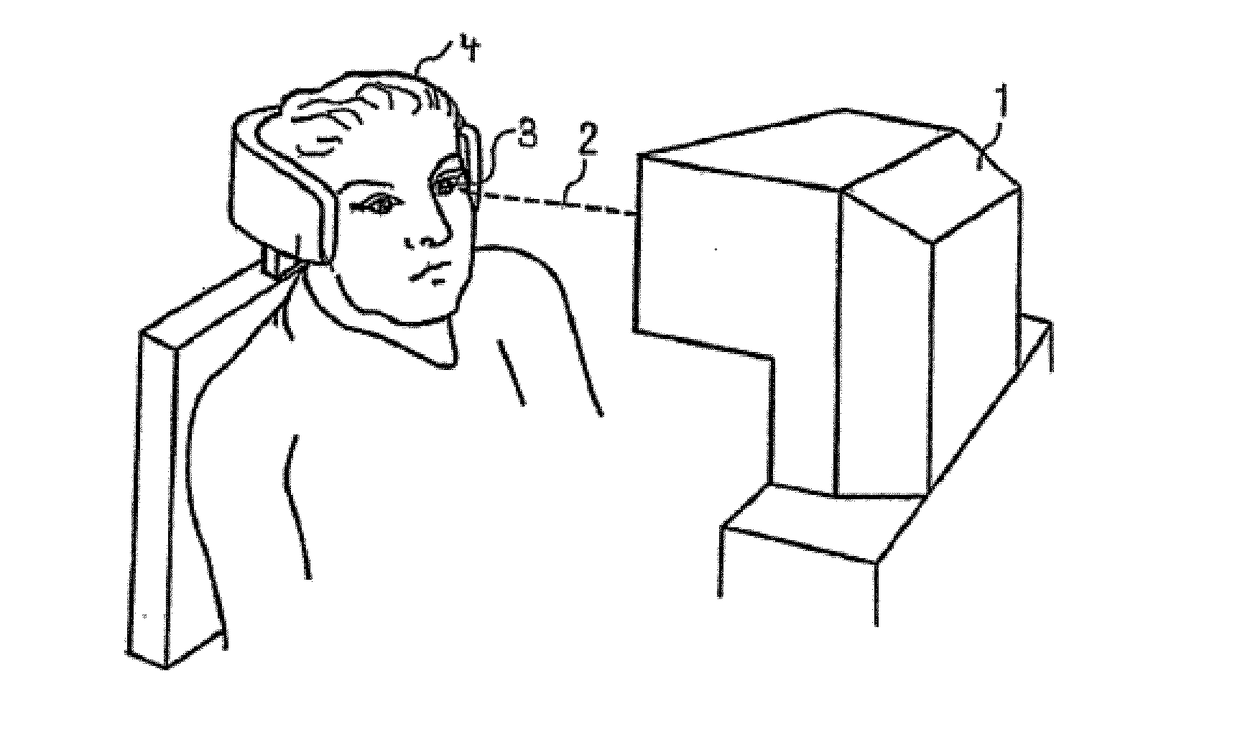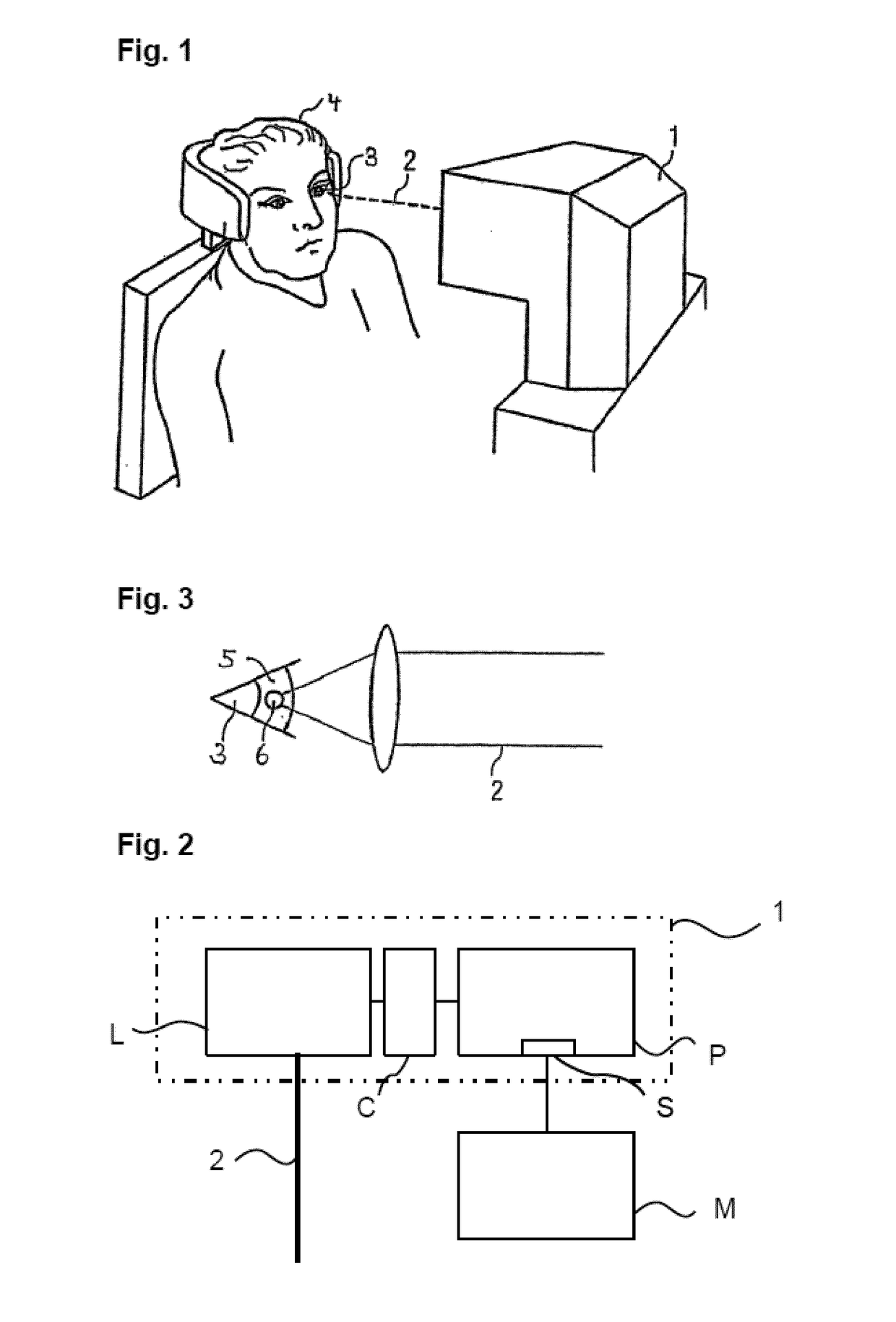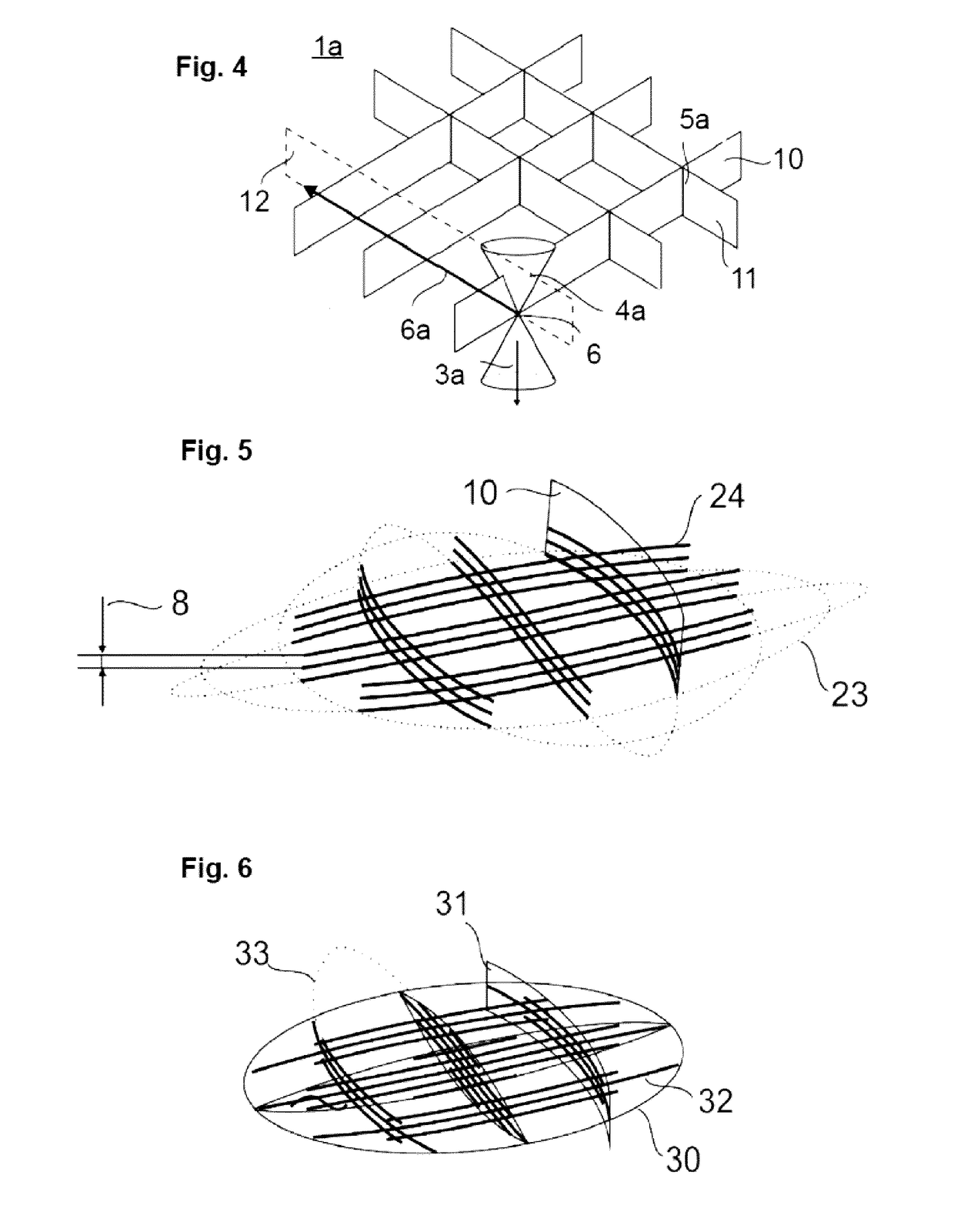Creating cuts in a transparent material using optical radiation
a transparent material and optical radiation technology, applied in laser surgery, eye surgery, etc., can solve the problems of inability to accurately focus the laser radiation, substantially prolong the creation of cuts, and reduce the number of paths, and reduce the geometry of the gas bubbles of adjacent sequential executions of the basic figur
- Summary
- Abstract
- Description
- Claims
- Application Information
AI Technical Summary
Benefits of technology
Problems solved by technology
Method used
Image
Examples
Embodiment Construction
[0066]FIG. 1 depicts a treatment apparatus 1 for eye surgery. For example an eye-surgery process which is similar to that described in EP 1 159 986 A2 or U.S. Pat. No. 5,549,632 can be carried out with it. The treatment apparatus 1 creates a material cutting in transparent material using treatment laser radiation 2. This material cutting can be e.g. a creation of cuts, in particular the treatment apparatus for correcting defective vision can bring about a change on an eye 3 of a patient 4. The defective vision can include hyperopia, myopia, presbyopia, astigmatism, mixed astigmatism (astigmatism in which there is hyperopia in one direction and myopia in a direction at right angles thereto), aspheric errors and higher-order aberrations. The material cutting can, however, also be used in the field of ophthalmology on other tissues of the eye, e.g. for sectioning the crystalline lens in cataract surgery. Where reference is made to eye surgery below, this is to be understood in each cas...
PUM
 Login to View More
Login to View More Abstract
Description
Claims
Application Information
 Login to View More
Login to View More - R&D
- Intellectual Property
- Life Sciences
- Materials
- Tech Scout
- Unparalleled Data Quality
- Higher Quality Content
- 60% Fewer Hallucinations
Browse by: Latest US Patents, China's latest patents, Technical Efficacy Thesaurus, Application Domain, Technology Topic, Popular Technical Reports.
© 2025 PatSnap. All rights reserved.Legal|Privacy policy|Modern Slavery Act Transparency Statement|Sitemap|About US| Contact US: help@patsnap.com



